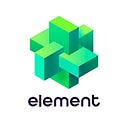We designed a “three-in-one platform”, Fred Wang, founder of Element, said.
How to interpret “three-in-one platform”?
That is “Create, Discover and Exchange.”
1. Create
Known as Mint, this is similar to the asset issuance that many trading platforms do in ERC20 transactions. NFT is a programmable asset that is based on smart contract design. That is to say, your NFTs can be used on any of the platforms, including the trading platforms, metaverse games and DeFi extension applications.
#Element offers a platform to Mint without coding.
2. Discover
We provide data-based services such as asset classification, search, ranking, transaction history, etc. Element is based on Ethereum to process the data. All users can find the asset you’re looking for in the first place and look up various information, including your wallet address and asset history.
#Element offers the NFT Pro Browser Tool service.
3. Exchange
Most people are unfamiliar with NFT exchanging. NFT trading is not the same as traditional asset trading, because of NFT uniqueness and indivisibility. So in addition to direct trading, Element includes professional auction services such as English and Dutch auction.
Moreover, there will be many innovative ways to play with the #Exchange service model, such as the blind box system we have in development.
Finally, we rely heavily on providing tools for many creators and working with many institutions. For example, we can work with artists in a blind box model, directly using our protocols. We will work with many chain game companies to become a decentralized NFT trading tool, so that in the future many game assets can be displayed and traded on Element instantly.
We only do basic tool development.
